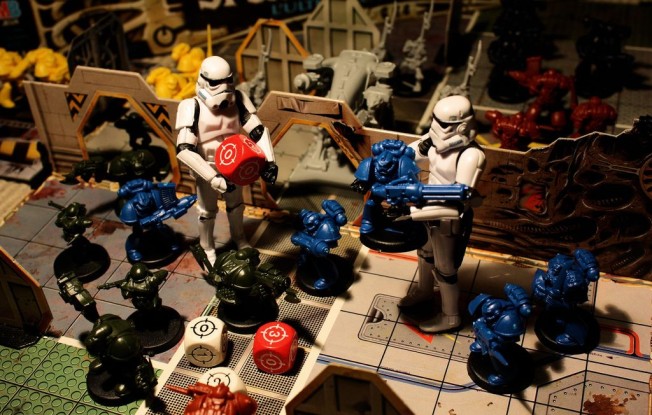Stephen Anderson, sandbox environments and why playfulness is the future
by The CommerceLab — Aug 14 '13
by The CommerceLab — Aug 14 '13

Whether it’s a learning module or a user engaging with a system, the authoritarian process of trying to shape and influence the user’s path with a definitive goal has its limits, says Stephen P. Anderson, keynote speaker at Gamification 2013. Instead, says Anderson, humans are by nature innately curious creatures that learn best when they watch others and are allowed to explore and create personal challenges with (near) endless possibilities.
This shift from “goal-based” games (think Halo or Candy Crush) to “diverging possibilities” games (MineCraft or Go where there are almost limitless outcomes) tap into the human psychology that Anderson is famous for – he’s the inventor of Mental Notes card deck, a tool that’s widely used by product teams to apply psychology to interaction design, and the author of Seductive Interaction Design, which explains how people “fall in love” with applications.
Anderson, who also works with organizations to help them manage creative teams and design better customer experiences, says this shift is one to a “sandbox” environment that encourages playful environments where “people create, surprise, and delight others” instead of relying on a “scripted series of instructional steps.”
Simple Rules, Infinite Possibilities
Designing for this process is more difficult, he says, but when it’s done right it becomes “maddeningly addictive,” like Pinterest and Twitter. The secret behind these successful platforms is they have a few simple rules and near infinite possibilities, but no clear paths or end points. While Anderson points out that an ever-increasing series of pre-scripted challenges like those found in Halo are undeniably fun, eventually they are either mastered or the user loses interest. In “generative games” (a term Anderson borrows from Sebastian Deterding) the challenges are self imposed, which makes it more playful and allows for the vagaries of human behaviour.
Anderson believes that anyone on creative teams that build websites, learning modules, games, apps or interactive customer experiences should have a firm grasp of basic human psychology and understand how the brain processes new information. This knowledge is essential to allow for “seductive” design, including effective gamification techniques.
Reframing Situations
Although implementing gamification into platforms, training and customer experience has transformed how people learn and experience online for the better, Anderson thinks about the possible negative consequences of gamifying almost every online activity and interaction.
“A more philosophical concern I have, especially with young children, is this: Are we handicapping our innate ability to reframe things into our own personal little games,” says Anderson. He explains that people are prone to invent little mind games to make tedious chores and events more exciting. Citing a personal example, he says when he was a boy he would turn the chore of mowing the lawn into a fantasy of sorts where if he did it “perfectly” some millionaire would drive by and, recognizing his lawn mowing awesomeness, hire him on the spot (at a much higher rate of compensation!) For Anderson, reframing lawn mowing as a game made the chore go by more easily and successfully. Adults, he says, will often reframe situations into games, such as guessing the exact location the subway door will open at the station platform, or which car will have fewer people. These are mind games most humans play naturally. He is cognizant that this natural game playing is invaluable. We have to allow children to have these experiences to use their imaginations.
Gamification Workshop
Anderson is not just all theory of mind, psychology and cognitive neuroscience. He is also a firm believer in curating this knowledge into practical techniques that people can apply to their own interactive design projects. His gamification workshop on October 4 at the University of Waterloo will feature dozens of different examples that people can use in their own organizations. During the workshop, participants will take a common and “perfectly usable” app and take it to the next level, using things like feedback loops, social proof, or just plain fun.
According to Anderson, even as the gamification world grows up, you’ll never be too old to play in a sandbox.

Apr 17 '14

Apr 16 '14

Apr 15 '14

Apr 11 '14
Copyright © 2016 CommerceLab


